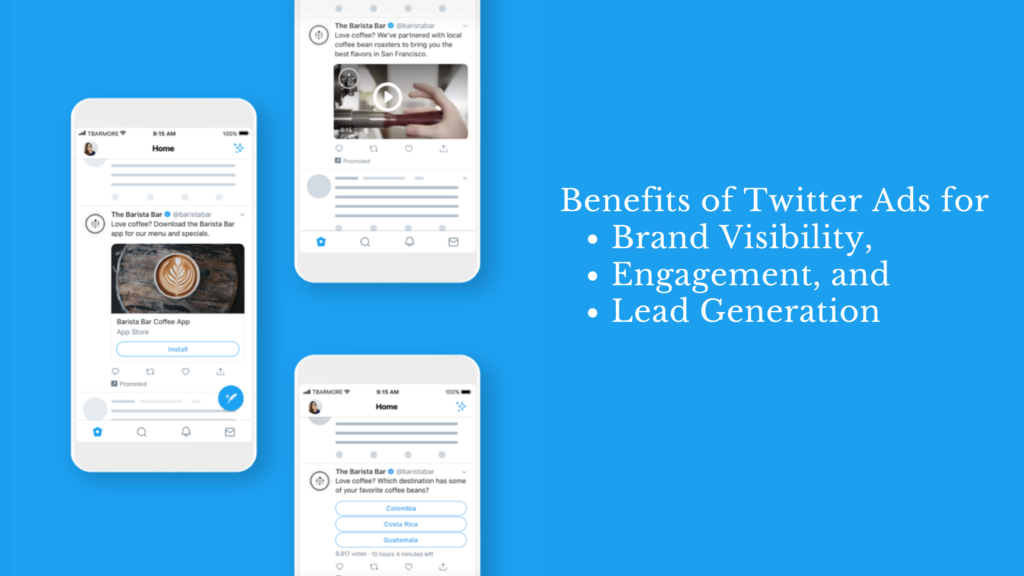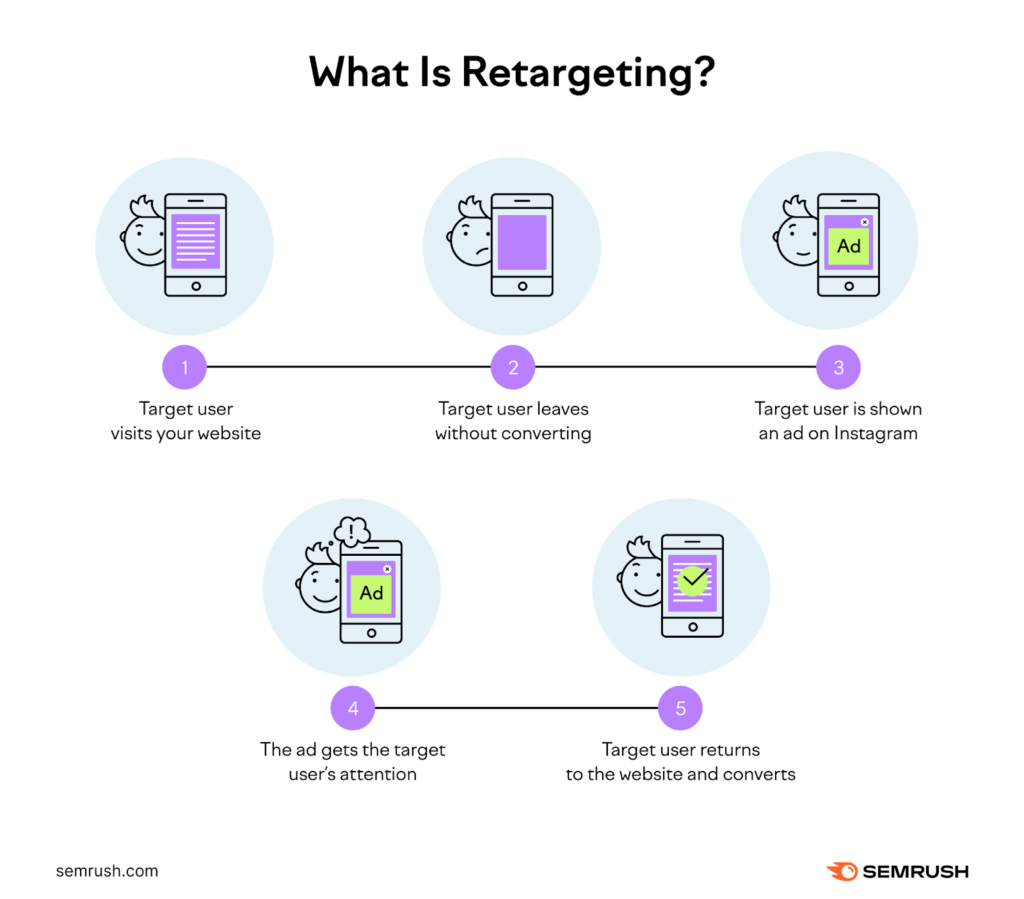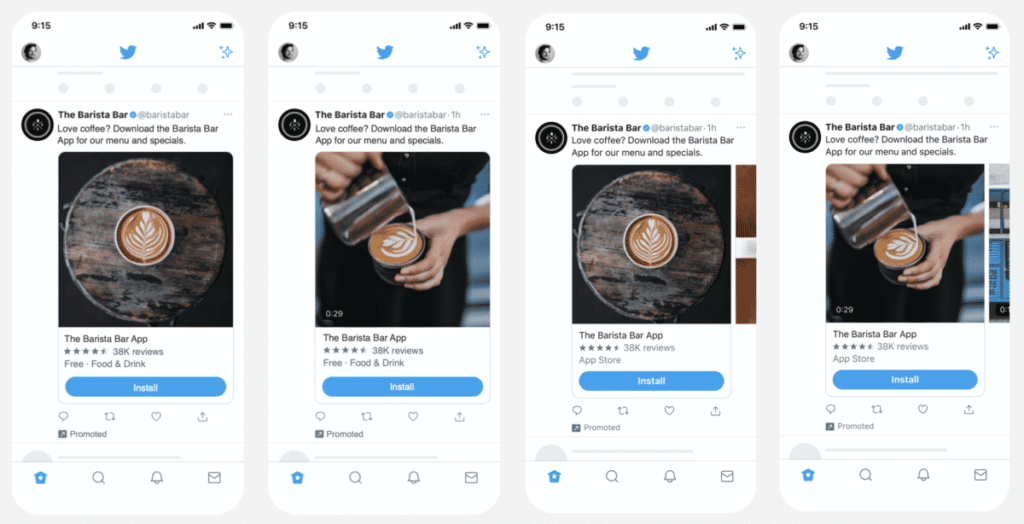Mastering Twitter Ads: A Comprehensive Guide to Boost Your Online Presence
Introduction to Twitter Ads
Twitter Ads are a powerful tool for businesses looking to enhance their online presence and engage with a broader audience. By leveraging Twitter’s extensive user base, businesses can drive brand visibility, generate leads, and boost engagement through targeted advertising.
What are Twitter Ads?
Twitter Ads are promotional content designed to appear in the Twitter feeds of targeted users. These ads can take various forms, including Promoted Tweets, Promoted Accounts, and Promoted Trends. Each format serves different advertising objectives and allows businesses to engage with users in unique ways.
Why are Twitter Ads Important for Businesses?
Twitter Ads are crucial for businesses aiming to tap into the platform’s active and diverse user base. With millions of daily active users, Twitter provides a dynamic environment for brands to increase visibility, foster engagement, and drive traffic to their websites or products. The platform’s real-time nature also allows businesses to capitalize on trending topics and timely events.

Benefits of Twitter Ads for Brand Visibility, Engagement, and Lead Generation
Twitter Ads offer several benefits:
- Brand Visibility: Twitter Ads can significantly increase your brand’s exposure by placing your content directly in front of your target audience.
- Engagement: Promoted Tweets and other ad formats encourage interactions such as likes, retweets, and comments, fostering a deeper connection with your audience.
- Lead Generation: Twitter’s targeting capabilities allow businesses to reach users who are most likely to convert, resulting in high-quality leads.
Overview of the Current Landscape of Twitter Ads
The landscape of Twitter Ads is continually evolving, with new features and targeting options regularly introduced. Understanding the current trends and tools available is essential for creating effective ad campaigns. Twitter offers robust analytics and targeting capabilities, making it an ideal platform for data-driven marketing strategies.
Understanding Twitter Ads Structure
Creating effective Twitter Ad campaigns begins with understanding the different types of ads and targeting options available.
Types of Twitter Ads
- Promoted Tweets: These are regular tweets that advertisers pay to display to users who do not already follow them. Promoted Tweets appear in users’ timelines, search results, and profiles.
- Promoted Accounts: These ads aim to increase a brand’s follower base by promoting the account to users who may be interested.
- Promoted Trends: These are trending topics sponsored by advertisers to increase visibility and engagement. Promoted Trends appear at the top of the trending list on Twitter’s homepage.
Ad Targeting Options
Twitter Ads offer a range of targeting options to help businesses reach their ideal audience. Advertisers can target users based on demographics (age, gender, location), interests, behaviors, and even specific keywords and hashtags. This precision ensures that ads are shown to users most likely to be interested in the content.
Creating Effective Twitter Ad Campaigns
Crafting effective Twitter Ad campaigns involves setting clear objectives, creating compelling ad copy, and continually optimizing performance.

Setting Objectives
Before launching a Twitter Ad campaign, it’s crucial to define clear objectives. These could include increasing website traffic, generating leads, boosting brand awareness, or driving sales. Clear objectives guide the campaign strategy and help measure success.
Crafting Compelling Ad Copy
Ad copy is the heart of your Twitter Ads. It should be engaging, concise, and tailored to resonate with your target audience. Use strong, action-oriented language and include a clear call-to-action (CTA) to encourage users to engage with your ad.
Optimizing Twitter Ad Performance
Optimization is key to ensuring that your Twitter Ads deliver the best possible results. This involves monitoring performance metrics and making data-driven adjustments.
Monitoring and Analytics
Twitter provides comprehensive analytics to track the performance of your ads. Key metrics to monitor include impressions, engagements, click-through rates (CTR), and conversion rates. Regularly reviewing these metrics helps identify what’s working and what needs improvement.
A/B Testing
A/B testing involves creating multiple versions of your ad with slight variations to see which performs best. Test different elements such as ad copy, visuals, and targeting criteria. Use the results to refine your ads and improve overall performance.
Advanced Strategies for Twitter Ads
To maximize the effectiveness of Twitter Ads, consider implementing advanced strategies such as retargeting and leveraging lookalike audiences.
Twitter Ad Retargeting
Retargeting allows you to re-engage users who have interacted with your brand but have not yet converted. By showing targeted ads to these users, you can remind them of your products or services and encourage them to take action.
Lookalike Audiences
Lookalike audiences are users who are similar to your existing customers or followers. Targeting these audiences can help expand your reach and attract new users who are likely to be interested in your brand.


Best Practices for Twitter Ads
Following best practices for Twitter Ads can help ensure your campaigns are effective and deliver the desired results.
Ad Frequency and Timing
To avoid overwhelming users, it’s important to find the right balance in ad frequency. Test different times of day and days of the week to identify when your audience is most active and likely to engage with your ads.
Ad Design and Visuals
Visual content is critical for capturing attention on Twitter. Use high-quality images, GIFs, and videos that are relevant to your ad copy. Ensure that your visuals are eye-catching and align with your brand’s style.
Measuring Twitter Ad ROI
Measuring the return on investment (ROI) of your Twitter Ads is essential to determine their effectiveness and justify your ad spend.
Key Performance Indicators (KPIs)
Track KPIs such as click-through rates (CTR), cost per acquisition (CPA), and return on ad spend (ROAS) to assess the performance of your campaigns. These metrics provide insights into how well your ads are achieving your objectives.
Calculating ROI
To calculate the ROI of your Twitter Ads, compare the revenue generated from your campaigns to the total ad spend. This involves tracking conversions and attributing them to your ads. Use this data to refine your strategies and improve future campaigns.
Common Mistakes to Avoid
Avoiding common mistakes can help ensure the success of your Twitter Ad campaigns.
Targeting Mistakes
One common mistake is targeting an audience that is too broad or too narrow. Ensure that your targeting criteria are specific enough to reach your ideal audience without being overly restrictive.
Ignoring Analytics
Regularly reviewing analytics data is crucial for optimizing your campaigns. Ignoring this data can lead to missed opportunities for improvement and wasted ad spend.
Case Studies: Successful Twitter Ad Campaigns
Analyzing real-world examples of successful Twitter Ad campaigns can provide valuable insights and inspiration.
Case Study 1: Nike’s #Breaking2 Campaign

Nike used Twitter Ads to promote their #Breaking2 campaign, aiming to break the two-hour marathon barrier. The campaign involved live-streaming the event and using Promoted Tweets to generate buzz.
Strategies Used:
- Promoted Tweets: To drive awareness and engagement.
- Live Streaming: To create real-time excitement.
- Hashtags: To encourage user participation and conversations.
Results:
- High Engagement: The campaign received millions of interactions.
- Increased Brand Visibility: Significant increase in brand mentions and visibility.
- Community Building: Fostered a community of running enthusiasts.
Case Study 2: Airbnb’s #WeAccept Campaign

Airbnb launched the #WeAccept campaign to promote inclusivity and diversity. They used Twitter Ads to reach a global audience and spread their message.
Strategies Used:
- Promoted Trends: To highlight the campaign.
- Promoted Tweets: To share impactful stories and videos.
- Targeted Ads: To reach specific demographics and interests.
Results:
- Broad Reach: The campaign reached millions of users worldwide.
- Positive Sentiment: High levels of positive engagement and user support.
- Brand Advocacy: Strengthened Airbnb’s brand image as inclusive and socially responsible.
Conclusion
Mastering Twitter Ads requires strategic planning, precise targeting, and continuous optimization. By following the best practices and advanced strategies outlined in this guide, businesses can harness the power of Twitter Ads to boost their online presence and achieve their marketing goals.
Frequently Asked Questions (FAQs)
Can I target specific demographics with Twitter Ads?
Yes, Twitter Ads offer a variety of targeting options, allowing advertisers to reach specific demographics such as age, gender, location, interests, and behaviors.
What is the difference between Promoted Tweets and Promoted Accounts?
Promoted Tweets are individual tweets that advertisers pay to display to users who do not follow them. Promoted Accounts aim to increase visibility for a Twitter account as a whole, encouraging users to follow the account.
How can I track the performance of my Twitter Ads?
You can track the performance of your Twitter Ads using Twitter Analytics, which provides detailed insights into key metrics such as impressions, engagements, and conversions. Additionally, third-party tracking tools can offer more advanced analytics and reporting features.
Are Twitter Ads suitable for small businesses?
Yes, Twitter Ads are scalable and can be tailored to fit the budgets of businesses of all sizes. Small businesses can start with modest budgets and gradually increase their ad spend as they see positive results. Budget-friendly strategies and precise targeting can help small businesses effectively reach their desired audience without overspending.



